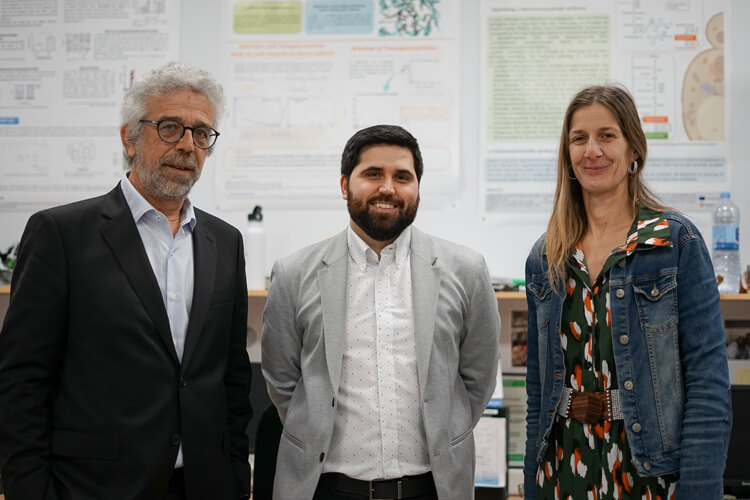Metabolic Engineering for Glycolipid Production
Glycolipids are molecules with high added value considering their amphipathic properties. They are involved in various important cellular processes and have many possible applications such as biosurfactants or adjuvants in vaccines, for example.
Glycosphingolipids (GSLs) are a group of glycolipids that contain a ceramide (lipid) attached to a carbohydrate. A GSL with potent immunostimulatory properties, α-galactosylceramide is very interesting for use in biomedical applications. However, it is difficult to produce as it involves complex chemical regio- and stereoselective synthesis.
Within this context, Dr Marc Caballé recently conducted his doctoral thesis at IQS, entitled A metabolic engineering approach for α-galactosylceramide production in S. Cerevisiae, supervised by Dr Magda Faijes and Dr Antoni Planas in the Bioengineering Department’s Biochemistry Laboratory at the IQS School of Engineering.
Metabolic engineering is based on the use of a biological platform that provides the necessary precursors for the synthesis of the desired molecule. Dr Caballé’s thesis formed part of the Glycodesign project (within the National R&D Plan of the Ministry of Science and Innovation), with the aim of obtaining α-galactosylceramide by modifying the S. cerevisiae yeast. It involved:
- Redesigning host metabolism for the redirection of lipid production towards phytoceramide;
- Implementing the modifications by generating new yeast strains;
- Identifying a previously unknown α-galactosylceramide synthase;
- Expressing this enzyme in the modified host considering the different cell compartments of the yeast.
Towards obtaining α-galactosylceramide
As far as metabolic engineering is concerned, S. cerevisiae yeast is capable of producing the precursors necessary to obtain the desired glycolipid: galactose nucleotide sugar and phytoceramide lipid. Strains with overexpression of the ICS1 and SUR2 genes and the elimination of the SCS7 gene were redesigned to increase the availability of phytoceramide.
Regarding the identification of the key enzyme for glycolipid synthesis, the specific enzyme, which was previously unknown, was identified for the first time. Knowing that Bacteroides fragilis, present in the human intestinal microbiota, produces galactosylceramide, a bioinformatic analysis of the 83 possible glycosyltransferase enzymes of the GT4 family of CAZy – Carbohydrate Active Enzymes was performed. Of these, four potential enzymes were identified and expressed in E. coli, with BF9343_3149 the only one capable of producing galactosylceramide with the desired alpha glycosidic linkage.
In conclusion, Dr Caballé’s research enabled the characterization of a new enzyme that is capable of producing α-galactosylceramide, a glycolipid with great interest for its immunostimulatory effect and its applications as a vaccine adjuvant, thus opening the door to future projects and new research with the new enzyme that has been discovered.
Related publication
Marc Caballé, Magda Faijes, Antoni Planas, Characterization of a Glycolipid Synthase Producing α-Galactosylceramide in Bacteroides fragilis, Int. J. Mol. Sci. 2022, 23(22), 13975
This thesis has been financed through a predoctoral FI grant from the Government of Catalonia and the European Social Fund, and under the PID2019-104350RB-I00 project with the Ministry of Science and Innovation (MICINN).
RELATED PEOPLE:
Antoni Planas Sauter, PhD
RESEARCH GROUP
Biological and Biotechnological Chemistry
RELATED PROJECTS
GLYCODESIGN (Ingenieria enzimática)






